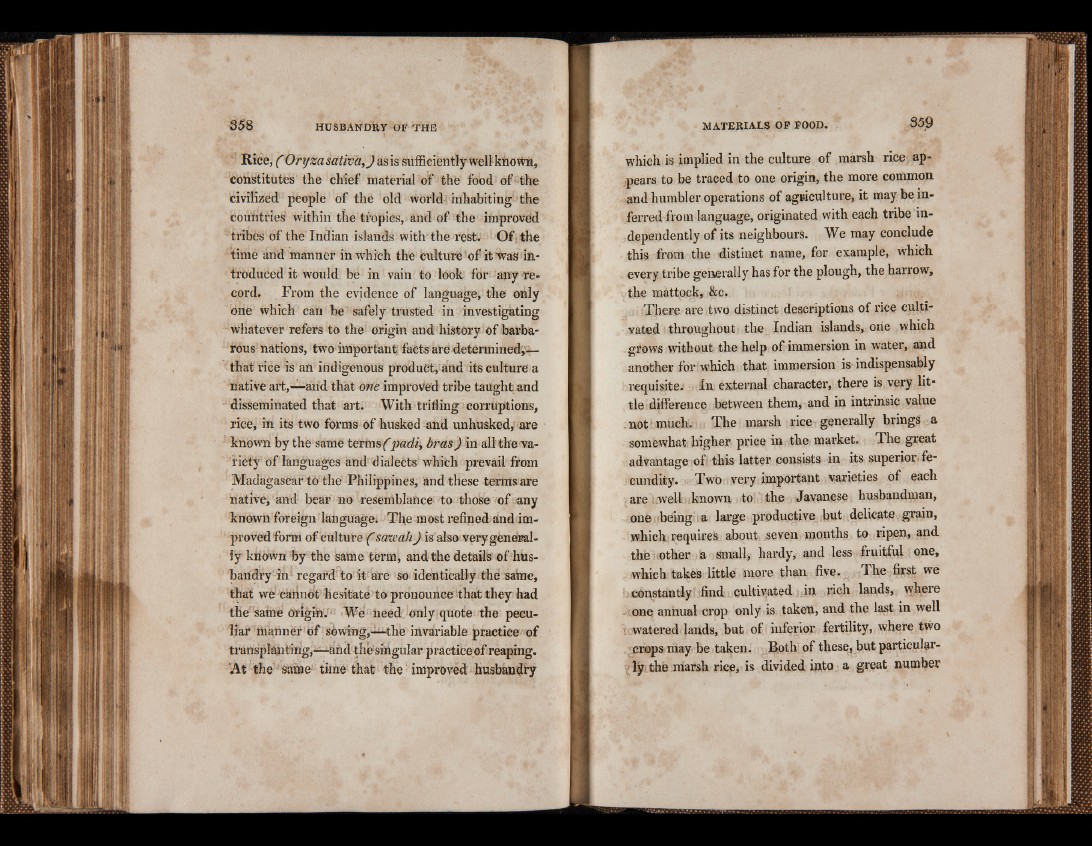
! Rice, COryzasativa,) as is sufficiently well known,
constitutes the chief material of the food of the
civilized people of thé old world inhabiting the
countries within the tropics, and of the improved
tribes of the Indian islands with the rest. Of the
time and manner in which the culture of it "Was introduced
it would be in vain to look for any record.
From the evidence of language, the only
one which can be safely trusted in investigating
whatever refers to the Origin and history of barbarous
nations, two important facts are determined,—
that rice is an indigenous product, and its culture a
native art,—and that owe improved tribe taiight and
disseminated that art. With trifling corruptions,
rice, in its two forms of husked and unhusked, are
known by the same termsf padi, bras) in all the variety
of languages and dialects which prevail from
Madagascar to the Philippines, and these ternis are
native, and bear no resemblance to those of any
known foreign language. The most refined and improved
form of culture ( soeoeah J is also very generally
known by the same term, and the details of husbandry
in regard to it are so identically the saine,
that we carinot hesitate to pronounce that they had
the same Origin. We need only quote the peculiar
manner of sowing,-^—the invariable practice of
transplanting,—and the singular practice of reaping.
‘At the same time that the: improved husbandry
which is implied in the culture of marsh rice appears
to be traced to one origin, the more common
and humbler operations of agriculture, it may be inferred
from language, originated with each tribe independently
of its neighbours. We may conclude
this from the distinct name, for example, which
every tribe generally has for the plough, the harrow,
the mattock, &c.
There are two distinct descriptions of rice cultivated
throughout; the Indian islands,, one which
grows without the help of immersion in water, and
another for which that immersion is indispensably
requisite. In external character, there is very little
difference between them, and in intrinsic value
i not much. The marsh rice generally brings : a
somewhat higher price in the market. The great
advantage of this latter consists in its superior > fecundity.
Two very important varieties of each
are well known to the Javanese husbandman,
one being a large productive but delicate grain,
which requires about seven months to ripen, and
the other a small, hardy, and less fruitful one,
which takes little more than five. The first we
constantly find cultivated in rich lands, where
one annual crop only is taken, and the last in well
• watered lands, but of inferior fertility, where two
crops may be taken. Both of these, but particularl
y the marsh rice, is divided into a great number